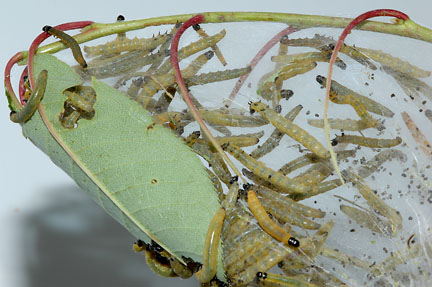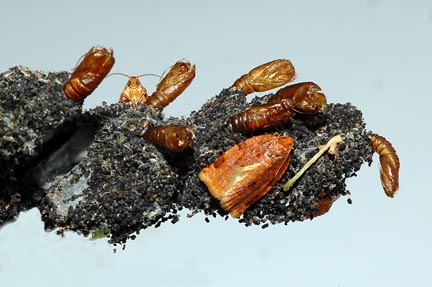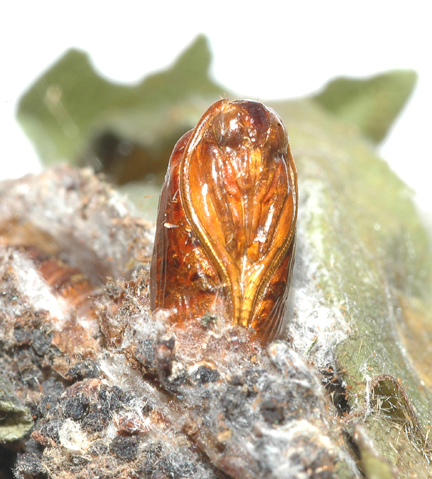The Ugly Nest Caterpillar (Archips cerasivoranus)
Archips is a common patch-restricted forager that feeds socially on small cherry trees. The caterpillars live in colonies containing several hundred siblings but colonies may merge, resulting in aggregations of a thousand or more individuals.
The most remarkable aspect of the caterpillars' collective behavior is their ability to manipulate leaves and branches, drawing them into a compact nest within which they live, feed and ultimately pupate. They accomplish this by spinning silk threads between the existing nest and new leaves that are to be drawn into the nest. Each stand of silk is stretched slightly before it is attached to a leaf and its axial retraction exerts a miniscule force on the leaf, pulling it slightly toward the nest. It is the cumulative force of many such strands of silk spun by groups of caterpillars all spinning at the same time that eventually draws the leaf into the nest. In this way the entire top of a small tree may be tightly bound into a nest.
Archips colony spinning and feeding
When the caterpillars have finished feeding, they construct individual pupal cells in close proximity at the center of the nest where large quantities of accumulated frass are held together with silk. A section of this "central pupal chamber" is shown in the middle image above. Prior to emerging, the pupae force their way to the outer surface of the silk nest where the adult moth ecloses.
References
Fitzgerald, T. D. 1993. Trail and arena marking by caterpillars of Archips cerasivoranus (Lepidoptera: Tortricidae). J. Chem. Ecol. 19:1479-1489.
Fitzgerald, T. D., K. Clark, R. Vanderpool and C. Phillips. 1991. Leaf shelter-building caterpillars harness forces generated by axial retraction of stretched and wetted silk. J. Insect Behav. 4: 21-32.
Fitzgerald, T. D. 1995. Caterpillars roll their own. Natural History Magazine 104:30-37
Fitzgerld, T. D. 2008. Aposematism in Archips cerasivoranus not linked to the sequestration of host-derived cyanide. J. Chem. Ecol 34 1283-1289.









